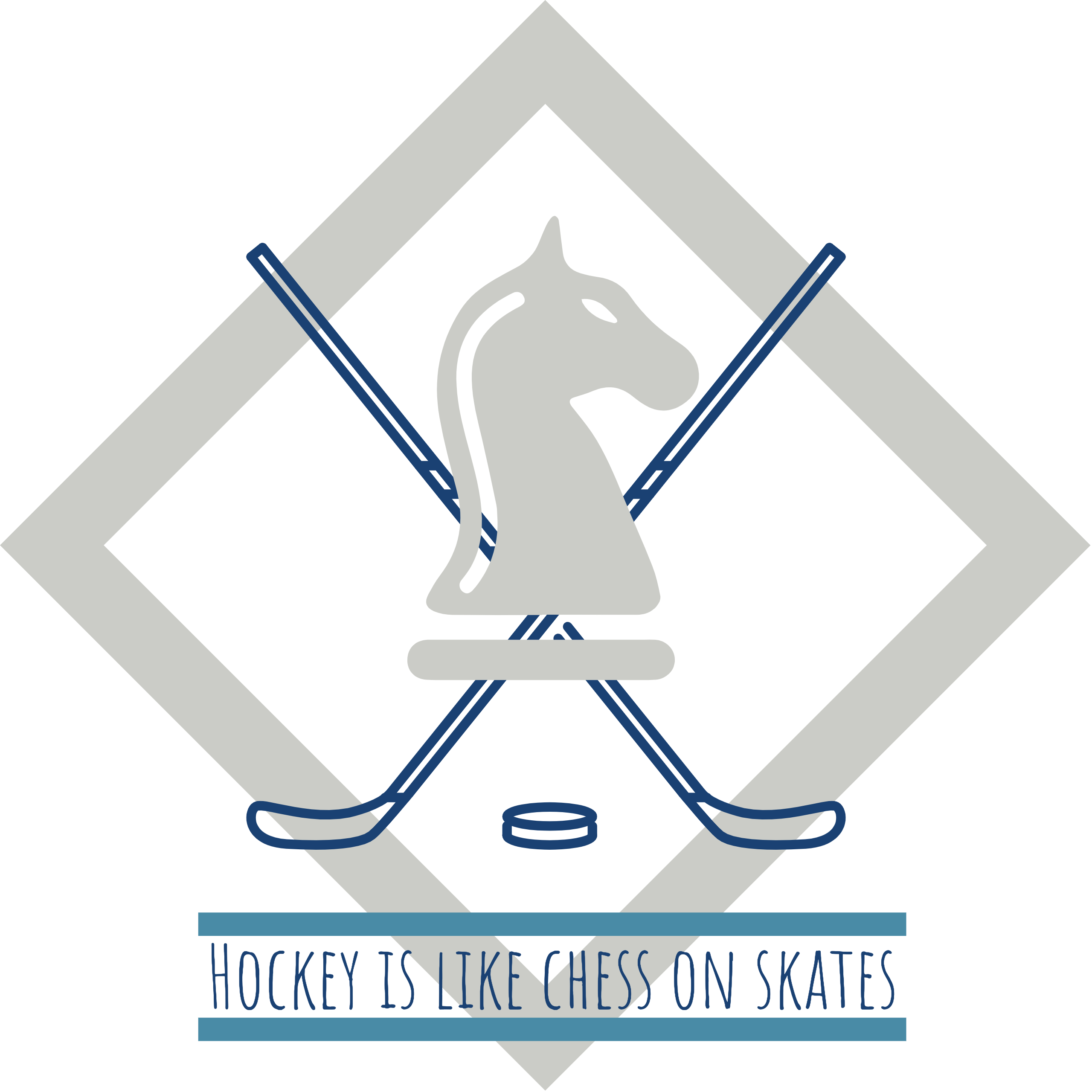“When they have the puck in our corner, we must control our speed and angle of attack when we body or stick check their player or else he may get by us”
DEFENSIVE ZONE – AGGRESSIVE CORNER CONTAINMENT
When their player has clear control of the puck in our corner in our end, we must be aggressive and smart at the same time or he will beat us one-on-one or have too much time to make a good play.
If we are too aggressive he can use this aggressiveness against us by faking one way and going the other, making us go with the fake for just an instant giving him enough time and space to either skate by us or make a good pass.
On the other hand, if we are not aggressive enough and hesitate, he will have the time and space to make a good pass anyway and feel too comfortable. Most players are too hesitant and not aggressive enough when checking. We want to make their player feel a train is coming at them under control.
The answer therefore is to balance aggressiveness with containment so we can adapt to whatever he is planning on doing and not give him much time to decide. So, how do we do that?
- Controlled Speed – we need to get to him quickly so you need to get your speed up high early but as you get closer to him you should start gliding with both skates wide apart, stick in both hands out in front on the ice if he is facing you, stick on puck, with your weight forward and balanced so you can react just as easily in both directions. If he speeds up you speed up.
- Proper Angle – if he is against or close to the boards and you come in straight at him, he has 2 choices to make in either of 2 directions and you don’t know which one he will likely choose. But if you come in on an angle of your choosing you make it more likely that he will choose the side furthest away from you, so you can react accordingly. Make the angle able for you to execute a bodycheck at his arms – under his stick- body – puck. And if he tries to spin to the narrow side you are coming from you can quite easily close the space he will have between you and the boards for an easy bodycheck. Also, and very importantly, by taking the angle your team mates also will be better able to anticipate and adjust to where his expected pass is likely to go understanding the puck carrier’s best options. Read his body positioning, where he is looking, his speed and where the puck is for clues as to what he is likely to do. If his head and shoulders move one way but his arms and the puck don’t move in the same direction, he is likely faking.
- Bodycheck If You Can – your objective is to bodycheck him cleanly and pin him to the boards until he loses the puck so he can’t stickhandle around you or play give and go with his team mate. If you can’t body check him because his back is turned for instance or because you can’t get close enough to him fast enough, slow down and contain him rather than taking an unrealistic chance of bodychecking him and missing or getting a penalty for hitting from behind. Again, remember, stick on the ice to easily get under his stick or to deflect his pass or to reach around to knock the puck off his stick.
- 4. Stay With Him After He Passes – this is very important after you have contained him but when he was able to make a good pass anyway. Just skate shoulder to shoulder with him so his team mate will not give him the return pass
The last thing we want to do is to skate by him trying to poke check or sweep check him turning away without slowing down. Any good defenceman will read this is coming by the way you are skating, pause, and wait for the so-called “fly-by”. Very very dangerous to do this in our zone when they have the puck. It should all be containment, take the body, and stick your nose in there when checking their player.
NO POKE CHECKING OR STICK CHECKING IN OUR ZONE UNLESS A BODYCHECK IS IMPOSSIBLE TO EXECUTE
